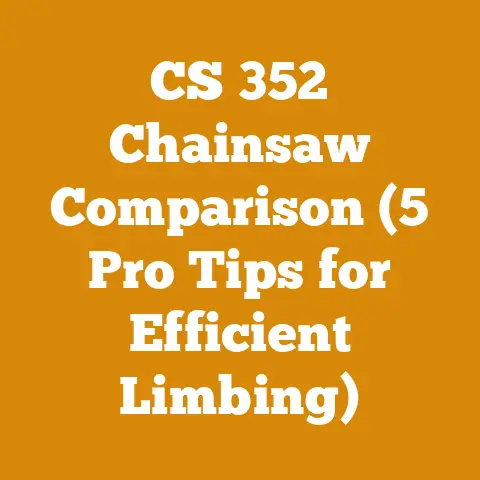Dump Trailer Build for Firewood Hauling (Custom Arborist Upgrade)
In the realm of smart living, efficiency and sustainability are paramount. As someone deeply involved in wood processing, logging, and firewood preparation for over two decades, I’ve learned that optimizing every step, from felling the tree to stacking the seasoned wood, significantly impacts both productivity and environmental responsibility. One area where I’ve consistently sought improvement is in the transportation of raw materials and finished firewood. This is where a custom-built dump trailer, specifically designed for arborist work and firewood hauling, comes into its own. Let’s delve into the process of building such a trailer, which I’ve personally found to be a game-changer in my operations.
1. Understanding the Fundamentals: Key Concepts and Definitions
Before diving into the build, it’s crucial to understand some fundamental concepts related to wood processing and the requirements of a firewood hauling trailer.
- Green Wood vs. Seasoned Wood: Green wood refers to freshly cut wood with a high moisture content (often 50% or higher). Seasoned wood, on the other hand, has been dried, typically to a moisture content of 20% or less, making it ideal for burning. The weight difference is significant; green wood is much heavier, requiring a sturdier trailer.
- Arborist Operations: This involves tree care, including pruning, trimming, and removal. The debris generated (branches, small logs, wood chips) often needs to be transported efficiently.
- Payload Capacity: This refers to the maximum weight the trailer can safely carry. It’s crucial to calculate this accurately based on the type of wood you’ll be hauling and the trailer’s design.
- Gross Vehicle Weight Rating (GVWR): The maximum permissible weight of the trailer and its load. This is a legal requirement and must be adhered to.
- Tongue Weight: The amount of weight the trailer exerts on the tow vehicle’s hitch. Proper tongue weight (typically 10-15% of the trailer’s total weight) is essential for safe towing.
- Dump Angle: The angle at which the trailer bed tilts during the dumping process. A higher dump angle ensures complete emptying of the load.
2. Planning and Design: Laying the Foundation
The planning phase is arguably the most critical. A well-thought-out design will save you time, money, and potential headaches down the line.
- Define Your Needs: Start by answering these questions:
- What type of wood will you be hauling most often (logs, chips, firewood)?
- What is the typical volume of wood you need to transport in a single trip?
- What is the maximum length of logs you’ll be hauling?
- What is your budget?
- What are the legal requirements for trailers in your region (lights, brakes, registration)?
- Conceptual Sketch: Create a rough sketch of the trailer, including dimensions, bed design (flatbed vs. angled), and desired features (e.g., sideboards, tarp system, tool storage). I always find it helpful to draw inspiration from existing trailers but tailor the design to my specific needs.
- Material Selection: The choice of materials will significantly impact the trailer’s durability and weight.
- Frame: Steel is the most common choice due to its strength and weldability. I recommend using high-strength steel (e.g., A36) for the frame to handle heavy loads.
- Bed: Steel is also a good option for the bed, but you can also consider using treated lumber or a combination of both. Steel is more durable, but lumber can be easier to replace if damaged.
- Hydraulic Cylinder: Choose a hydraulic cylinder with sufficient lifting capacity. Calculate the required capacity based on the estimated maximum load and the desired dump angle.
- Dimensions: Based on my experience, a bed size of 8 feet long by 5 feet wide by 2 feet high is a good starting point for a firewood hauling trailer. Adjust these dimensions based on your specific needs.
- Axle Selection: Choose an axle with a GVWR that exceeds your estimated maximum weight. Consider using tandem axles for increased stability and load capacity.
- Braking System: If your trailer’s GVWR exceeds a certain threshold (typically 3,000 lbs), you’ll need to install a braking system. Electric brakes are a common and reliable option.
- Arborist Upgrades:
- Chainsaw Mount: Design a secure mount for your chainsaw, ideally located on the tongue of the trailer.
- Tool Storage: Incorporate lockable storage compartments for axes, wedges, fuel, and other essential tools.
- Chip Box Integration: Consider adding a dedicated chip box at the front of the trailer for hauling wood chips.
- Log Binders: Install heavy-duty log binders along the sides of the trailer bed to secure logs during transport.
3. Acquiring Materials and Tools: Preparing for the Build
Once you have a solid design, it’s time to gather the necessary materials and tools.
- Materials List: Create a detailed materials list based on your design, including steel tubing, steel sheets, axles, wheels, tires, hydraulic cylinder, hydraulic pump, hydraulic hoses, wiring, lights, brakes, fasteners, and paint.
- Tool Inventory: Ensure you have the following tools:
- Welding machine (MIG or stick)
- Angle grinder with cutting and grinding discs
- Drill press or hand drill
- Metal cutting saw (band saw or chop saw)
- Measuring tape
- Square
- Level
- Wrenches and sockets
- Hydraulic hose crimper (if making your own hydraulic hoses)
- Paint sprayer (optional)
- Sourcing: Shop around for the best prices on materials and tools. Consider purchasing from local suppliers to support your community and potentially save on shipping costs.
4. Frame Construction: Building the Foundation
The frame is the backbone of the trailer, so it’s crucial to build it strong and accurately.
- Cutting Steel: Cut the steel tubing to the required lengths based on your design. Use a metal cutting saw for clean, precise cuts.
- Welding the Frame: Assemble the frame by welding the steel tubing together. Use a square to ensure the frame is perfectly square and level. I recommend using a welding jig to maintain accuracy.
- Axle Mounting: Weld the axle mounting plates to the frame. Ensure the axles are properly aligned to prevent uneven tire wear.
- Tongue Construction: Build the trailer tongue using heavy-duty steel tubing. The tongue should be long enough to provide adequate clearance between the trailer and the tow vehicle.
- Hitch Installation: Install the hitch coupler on the tongue. Choose a coupler with a weight rating that matches or exceeds the trailer’s GVWR.
- Reinforcements: Add reinforcements to the frame at critical stress points, such as the axle mounting points and the hitch connection.
Personal Experience: In one of my early trailer builds, I underestimated the importance of reinforcing the frame. After hauling a few loads of green oak, the frame started to show signs of stress. I had to reinforce it with additional steel, which added unnecessary weight and cost. Lesson learned: overbuild rather than underbuild.
5. Bed Construction: Creating the Hauling Platform
The bed is where the wood will be loaded, so it needs to be strong, durable, and designed for easy loading and unloading.
- Bed Frame: Build a frame for the bed using steel tubing. This frame will provide support for the bed surface.
- Bed Surface: Attach the bed surface to the bed frame. You can use steel sheets, treated lumber, or a combination of both. If using steel sheets, weld them to the frame. If using lumber, bolt them to the frame.
- Sideboards: Add sideboards to the bed to prevent wood from falling off during transport. You can use steel tubing, lumber, or a combination of both. I prefer using removable sideboards for added versatility.
- Tailgate: Design a tailgate that is easy to open and close. Consider using a ramp tailgate for easier loading of heavy items.
- Dump Mechanism: Install the hydraulic cylinder to the bed frame and the trailer frame. This will allow you to tilt the bed for dumping. Ensure the hydraulic cylinder is properly aligned to prevent binding.
Case Study: I once built a firewood trailer for a local firewood business. They requested a high dump angle to ensure complete emptying of the load. I achieved this by carefully calculating the placement of the hydraulic cylinder and using a scissor-lift mechanism to amplify the lifting force. The result was a trailer that could dump even the stickiest loads of firewood.
6. Hydraulic System Installation: Powering the Dump
The hydraulic system is what makes the dump trailer function. Proper installation is crucial for safe and reliable operation.
- Hydraulic Pump: Install the hydraulic pump. You can use an electric hydraulic pump or a PTO-driven pump. An electric pump is easier to install, while a PTO-driven pump is more powerful.
- Hydraulic Hoses: Connect the hydraulic hoses from the pump to the hydraulic cylinder. Use high-pressure hydraulic hoses that are rated for the pressure of your hydraulic system.
- Hydraulic Valve: Install a hydraulic valve to control the flow of hydraulic fluid to the cylinder. This valve will allow you to raise and lower the bed.
- Reservoir: Install a hydraulic fluid reservoir to store the hydraulic fluid.
- Testing: Test the hydraulic system to ensure it is working properly. Check for leaks and make sure the cylinder is raising and lowering the bed smoothly.
7. Electrical System Installation: Ensuring Safety and Visibility
The electrical system provides power for the lights, brakes, and other electrical components.
- Wiring: Run the wiring from the tow vehicle to the trailer. Use a wiring harness that is designed for trailers.
- Lights: Install the tail lights, brake lights, and turn signals. Ensure the lights are properly grounded to prevent electrical problems.
- Brakes: Connect the electric brakes to the wiring harness.
- Testing: Test the electrical system to ensure all the lights and brakes are working properly.
8. Arborist Upgrades Implementation: Tailoring to Specific Needs
This is where you customize the trailer to meet the specific needs of your arborist operations.
- Chainsaw Mount: Fabricate a secure chainsaw mount on the tongue of the trailer. Use heavy-duty steel and ensure the mount is lockable to prevent theft.
- Tool Storage: Build lockable storage compartments for axes, wedges, fuel, and other essential tools. Consider using weatherproof materials to protect your tools from the elements.
- Chip Box Integration: If desired, add a dedicated chip box at the front of the trailer. This box can be made from steel or lumber and should be designed for easy loading and unloading of wood chips.
- Log Binders: Install heavy-duty log binders along the sides of the trailer bed to secure logs during transport. Use ratchet straps or chain binders for maximum security.
Unique Insight: I once integrated a small chipper directly onto the trailer. This allowed me to chip branches and debris on-site, reducing the volume of material I needed to haul and saving time and fuel. While this requires careful planning and execution, it can be a highly efficient solution for arborist operations.
9. Finishing Touches: Protection and Aesthetics
The finishing touches are important for protecting the trailer from the elements and giving it a professional look.
- Priming: Prime the trailer with a rust-resistant primer.
- Painting: Paint the trailer with a durable paint that is resistant to scratches and fading. I recommend using an industrial-grade paint for maximum protection.
- Sealing: Seal all seams and joints to prevent water from entering the frame.
- Tarp System: Install a tarp system to cover the load during transport. This will prevent wood from falling off and protect the load from the elements.
- Mud Flaps: Install mud flaps behind the wheels to prevent rocks and debris from being thrown up onto the trailer.
10. Safety Considerations: Prioritizing Safe Operation
Safety should always be the top priority when building and operating a dump trailer.
- Weight Distribution: Ensure the load is evenly distributed on the trailer to prevent instability.
- Tie-Downs: Use tie-downs to secure the load and prevent it from shifting during transport.
- Braking: Check the brakes regularly to ensure they are working properly.
- Lighting: Ensure all the lights are working properly before each trip.
- Tire Pressure: Check the tire pressure regularly and inflate the tires to the recommended pressure.
- Safe Dumping Practices: Always dump the load on a level surface and ensure there are no obstructions in the area.
- Personal Protective Equipment (PPE): Wear appropriate PPE, including safety glasses, gloves, and hearing protection, when operating the trailer.
Data and Statistics: According to the National Highway Traffic Safety Administration (NHTSA), trailer accidents are often caused by improper loading, inadequate maintenance, and driver error. By following these safety guidelines, you can significantly reduce the risk of an accident.
11. Legal and Regulatory Compliance: Ensuring Legal Operation
It’s crucial to comply with all applicable laws and regulations regarding trailer construction and operation.
- Registration: Register the trailer with your local Department of Motor Vehicles (DMV).
- Inspection: Have the trailer inspected to ensure it meets all safety requirements.
- Licensing: Obtain any required licenses or permits for operating the trailer.
- Insurance: Obtain insurance for the trailer to protect yourself from liability in the event of an accident.
12. Maintenance and Upkeep: Prolonging the Life of Your Trailer
Regular maintenance is essential for prolonging the life of your dump trailer and ensuring its safe operation.
- Greasing: Grease all moving parts regularly, including the axles, hitch coupler, and hydraulic cylinder.
- Lubricating: Lubricate the hydraulic system with hydraulic fluid.
- Inspecting: Inspect the trailer regularly for signs of wear and tear, such as cracks, rust, and loose bolts.
- Repairing: Repair any damage to the trailer promptly.
- Cleaning: Clean the trailer regularly to remove dirt, debris, and salt.
Cost Analysis: While building a custom dump trailer requires an initial investment, it can save you money in the long run by reducing hauling costs and increasing efficiency. The cost of materials and labor will vary depending on the size and complexity of the trailer, but you can expect to spend anywhere from $3,000 to $10,000.
13. Alternative Solutions and Considerations
While building a custom dump trailer offers numerous advantages, it’s important to consider alternative solutions and factors that might influence your decision.
- Buying a Pre-Built Trailer: Purchasing a pre-built dump trailer can be a faster and more convenient option, especially if you lack the time or skills to build one yourself. However, pre-built trailers may not always meet your specific needs and can be more expensive than building your own.
- Renting a Trailer: Renting a dump trailer can be a cost-effective solution for occasional hauling needs. However, renting can become expensive if you need to haul wood frequently.
- Hiring a Hauling Service: Hiring a hauling service can be a good option if you don’t want to deal with the hassle of hauling wood yourself. However, this can be the most expensive option, especially if you need to haul wood regularly.
- Environmental Impact: Consider the environmental impact of your wood processing and hauling operations. Use sustainable forestry practices, reduce fuel consumption, and dispose of waste properly.
14. Strategic Advantages of a Custom-Built Dump Trailer
A custom-built dump trailer offers several strategic advantages over other hauling methods:
- Refine Your Design: Review your initial design and make any necessary adjustments based on the information you’ve learned in this guide.
- Create a Detailed Materials List: Create a detailed materials list and start shopping around for the best prices.
- Gather Your Tools: Ensure you have all the necessary tools before you start building.
- Start Building: Follow the step-by-step instructions in this guide to build your custom dump trailer.
- Test and Refine: Once you’ve completed the build, test the trailer thoroughly and make any necessary adjustments.
- Enjoy the Benefits: Start using your custom dump trailer to haul firewood and other materials efficiently and safely.
Building a custom dump trailer is a challenging but rewarding project. By following this guide and paying attention to detail, you can create a durable, efficient, and safe trailer that will serve you well for years to come. Remember to prioritize safety, comply with all applicable laws and regulations, and maintain your trailer regularly. Good luck with your build!






